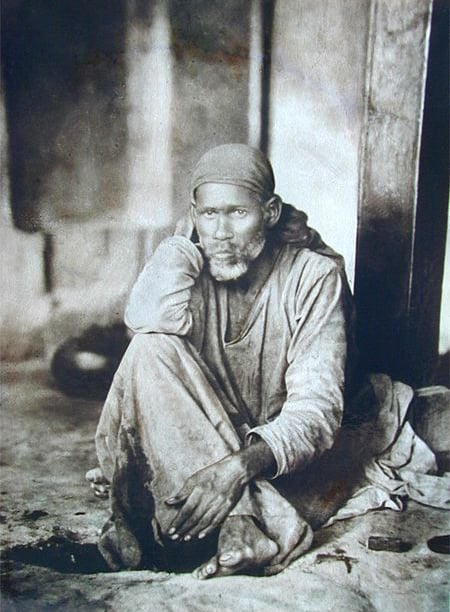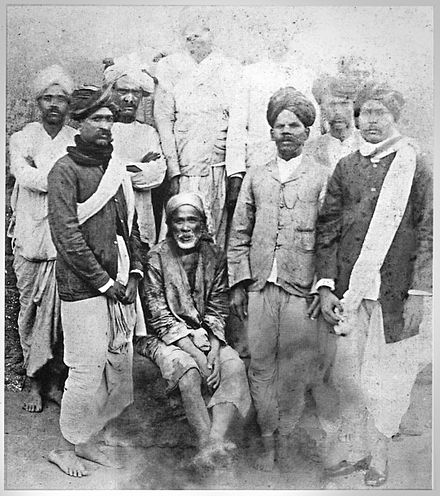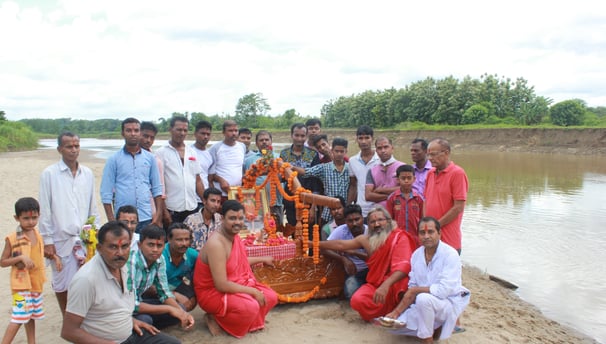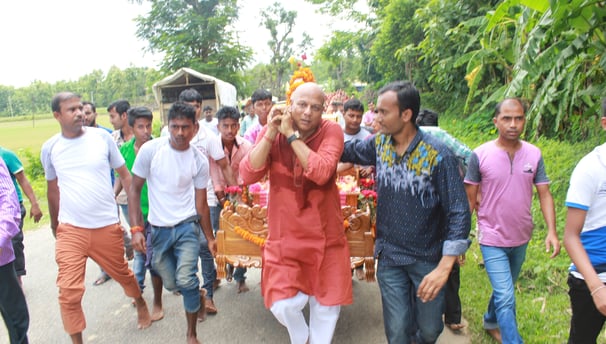Shirdi Sai Baba
Life of Sai Baba:
Shirdi Sai Baba, was an Indian spiritual master and fakir, considered to be a saint, revered by both Hindu and Muslim devotees during and after his lifetime. He preached the importance of realization of the self and criticized love towards perishable things.
Sai Baba arrived in Shirdi, Maharashtra in his teenage years; where he was often found immersed in deep meditation under a neem tree - sometimes for several days on end without food or water. The local villagers; however, perceived him differently. Kids would consider him a mad man and throw rocks at him; meanwhile, the religiously inclined villagers would pay regular visits to learn from him.
Practice Sai Baba's Teachings:
Becoming a devotee of Sai Baba is a matter of faith, love, and purity.
Sai Baba taught that one should seek the truth, serve others, and surrender to God. Here are some steps that may help you in your spiritual journey:
Chant Sai Baba’s name regularly and with devotion. You can also sing bhajans or hymns in praise of Sai Baba.
Read Sai Baba’s teachings and stories from books such as the Shri Sai Satcharita, the Sai Baba of Shirdi: A Unique Saint, or the Sai Sarathi magazine.
Visit Sai Baba’s temple or shrine, if possible, and offer your prayers and gratitude. You can also participate in the rituals and ceremonies such as the aarti, the abhishekam, or the prasad.
Follow Sai Baba’s principles of love, forgiveness, charity, contentment, inner peace, and devotion. Treat everyone with respect and compassion, regardless of their religion, caste, or status.
Seek guidance from Sai Baba whenever you face any difficulties or doubts. You can ask him for help through prayer, meditation, or intuition.
These are some of the ways to become a devotee of Sai Baba. However, the most important thing is to have faith in him and love him with all your heart. Sai Baba said, “If you look to me, I look to you. If you cast your burden on me, I shall surely bear it.” He also said, “My eye is ever on those who love me.” So, if you love Sai Baba sincerely and earnestly, he will surely love you back and make you his own. 🙏
Antonio Rigopoulos, in his book: The Life and Teachings of Sai Baba of Shirdi writes,
"The people of the village were wonder-struck to see such a young lad practicing hard penance, not minding heat or cold. By day he associated with no one, by night he was afraid of nobody."
As Sai Baba grew older, he found himself a home in a dilapidated mosque, where he continued to live a solitary life. He begged for alms, and tended to traveling visitors with his spiritual teachings. At the mosque he maintained a sacred fire called Dhuni, and would offer its ash-Udi to visitors. Many believed this sacred ash to have healing powers. Today, Sai Baba temples all across the globe continue to practice maintaining a Dhuni, and offer Udi to devotees.
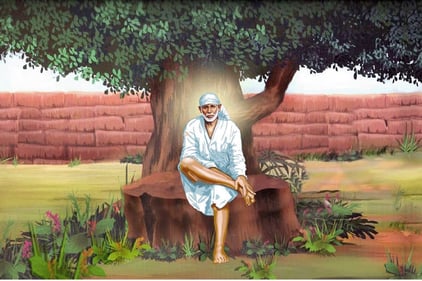



Picture from Shirdi Sai Baba Temple. The temple, or Sai Baba's final resting place (Samadhi) is visited by millions of his devotees in Shirdi every year.
Depiction of Sai Baba sitting under a neem tree which today marks the first step on a Shirdi pilgrimage for devotees to seek blessings.
Picture of Sai Baba before 1918, resting in the mosque.
Picture of Sai Baba meeting with his devotees who have traveled from afar.
Sai Baba's Teachings:
Throughout his lifetime he preached a moral code of love, help, and forgiveness. His actions embodied charity, contentment, and inner peace and devotion to God and Guru. Sai Baba condemned discrimination based on religion or caste. He had both Hindu and Muslim followers, but when pressed on his own religious affiliations, he refused to identify himself with one to the exclusion of the other.
His teachings combined elements of Hinduism and Islam: he gave the Hindu name Dwaraka Mayi to the mosque in which he lived, practiced both Hindu and Muslim rituals, and taught using words and figures that drew from both traditions. According to the Shri Sai Satcharita, a hagiography written shortly after his death, his Hindu devotees believed him to be an incarnation of the Hindu deity Dattatreya.
